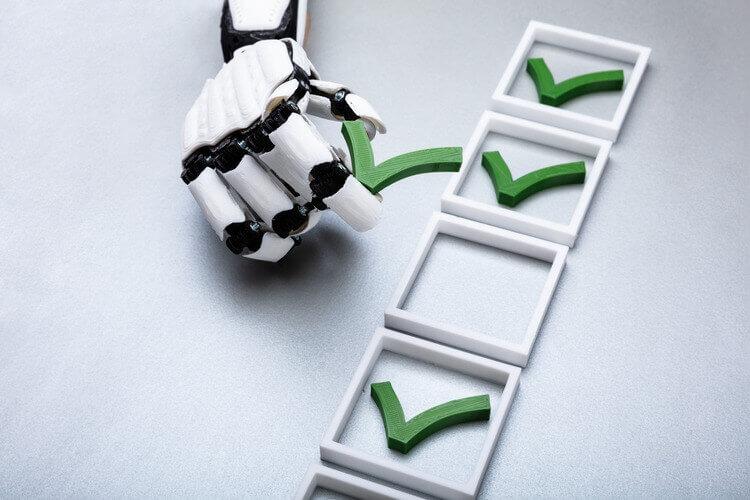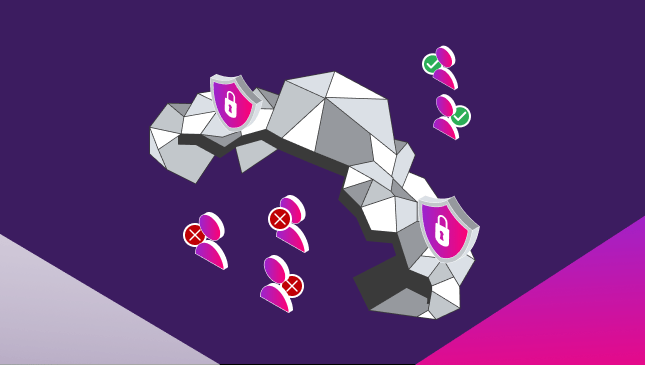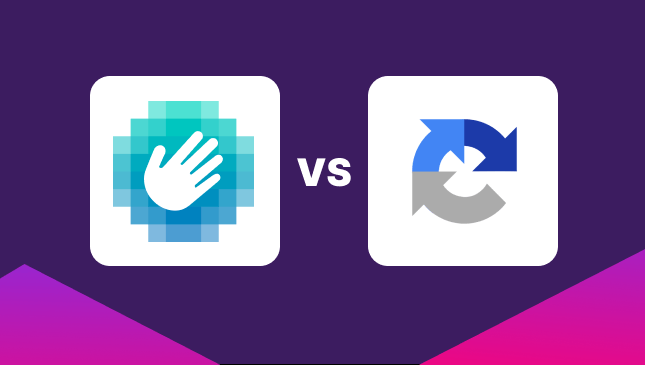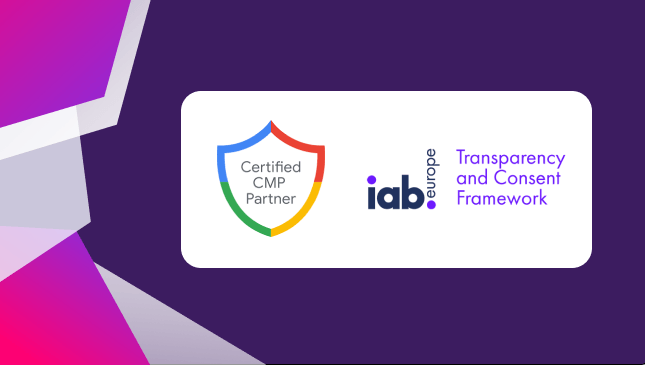Don’t Fall Victim: How to Detect Bot Attack on Your Website
Sanja Trajcheva
|Website Ops & Security | November 06, 2023
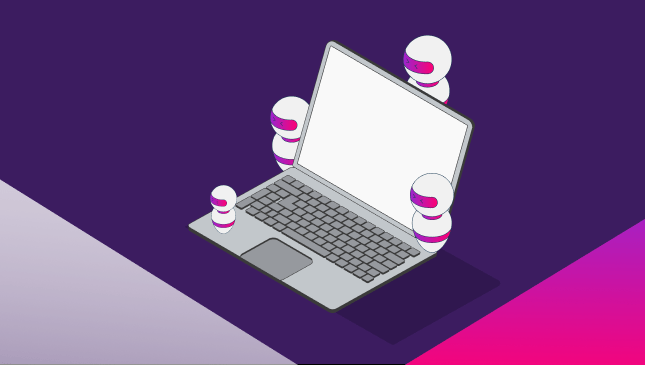
Bot attacks on websites are a growing concern many businesses are worried about. According to our latest research, with over 40% of all online traffic driven by bots, these concerns are justified.
Bots are automated programs that mimic human behavior online, performing tasks at lightning speed. When we talk about them, it’s important to remember that there are good bots and there are bad bots.
Good bots, like SEO crawlers and chatbots, are here to make our lives easier. For example, search engine crawlers can help users find the information they need more quickly and easily, or chatbots can provide customer support and improve the user experience.
However, bad bots pose a serious threat. They can target your website, apps, servers, or ads and overwhelm them with fake and malicious traffic.
In this blog post, we’ll focus specifically on the malicious bots that can potentially attack your website.
We’ll uncover how they operate, the harm they can cause to your website and analytics, early signs of their presence, and most importantly, how to protect your website from bots. So, let’s dive in.
How does a bot attack work?
Understanding how malicious bots operate and how bot attacks happen is important. Once you know their nature, common signs, and patterns, detecting unwanted activity in the future will be easier.
The steps of a bot attack typically include:
- Identifying potential targets and vulnerabilities. This may involve scanning websites for outdated software or looking for common security misconfigurations.
- Infecting the target with malware. This can be done through phishing emails, malicious links, or drive-by downloads.
- Establishing command and control (C&C) channel. The next step attackers use is to gain control over the infected device and issue commands to the bots.
- Attack. Once the attackers gain control, they use the bots to carry out the website attack.
Different types of website bot attacks
Botmasters employ a variety of techniques and attack types, depending on the goal they want to achieve.
When it comes to bot attacks on a website, these are the most common forms:
- Denial-of-service (DoS) attacks: Malicious bots are used to flood a website with traffic, making it unavailable to legitimate users.
- Distributed denial-of-service (DDoS) attacks: A distributed denial-of-service, or DDoS attack, is a more powerful and harmful type of DoS attack. It uses more bots from multiple locations, resulting in more severe risks.
- Web scraping: In this type of attack, bots are instructed to extract data from websites, such as product prices or customer information.
- Credential stuffing attacks: In this attack method, bots are used to try to log into accounts using stolen credentials from previous data breaches.
- Brute force attacks: This is a method where fraudsters use bots to try to guess passwords or other login credentials in order to gain unauthorized access to a system or data.
- Form spam: Known as form spamming or comment spam, is a type of malicious bot attack in which automated bots submit fraudulent or unsolicited data through online forms, typically found on websites.
- Account takeover (ATO) attacks: The goal of an ATO attack is for the attackers to gain unauthorized access to user accounts.
- Price scraping: This is a technique where automated bots extract pricing and product information from websites. Usually, it’s used to gain a competitive advantage.
- SEO spam: Malicious bot traffic has the power to manipulate search engine rankings through some actions like generating spammy backlinks to websites or high volumes of clicks on certain pages.
Why do you need to block bots from your website?
The answer is simple: the malicious bot traffic is constantly on the rise. In the latest data, fraudulent traffic from bad bots made up 30.2% of all web traffic in 2022, a growth of 2.5% from the previous year.
But what’s at stake for your website and business? Well, if you don’t block these bots from accessing your website, their fake visits will enter into your analytics. This will make it challenging to get an accurate understanding of your website’s performance.
For instance, with a significant amount of fake traffic, you’ll have the sense that your marketing efforts are driving the desired traffic on your website. From here, you may take action to convert those visitors, spending your time and efforts optimizing your marketing activities based on irrelevant data.
The consequences of bot traffic for your website and business
Irrelevant data and wasted time and resources are just an example of how bot traffic could affect your business. The consequences associated with it, unfortunately, could be more detrimental.
Here are some potential consequences:
- Data breaches: Bots can exploit vulnerabilities and potentially lead to data breaches, compromising sensitive information.
- Website downtime: A large volume of bot traffic will overwhelm a website’s resources. This can result in downtime, impacting user access and affecting the search engine rankings.
- SEO impact: Bots can affect search engine optimization (SEO) rankings by increasing or decreasing traffic, impacting your website’s visibility.
- Analytics disruption: Irrelevant bot visits also take place at your website analytics. This makes it challenging to understand actual user behavior and preferences and make informed decisions based on fake data.
- Content scraping: Bots can scrape and duplicate your content, potentially impacting your SEO and brand reputation.
- Security risks: Some bots may attempt to exploit vulnerabilities, leading to data breaches, stolen user accounts, fraudulent purchases, etc.
- Decreased user experience: Legitimate users may encounter slower page load times and difficulty accessing your website due to bot traffic.
- Brand damage: If users experience bad website loading speed they might be disappointed in what worked well previously for them. Even worse, if they notice your site is compromised and their data could be stolen, it can cause serious damage to your reputation and trustworthiness.
- Wasted time and resources: Dealing with fake traffic generated by bots can consume valuable time and resources, particularly for marketing teams trying to analyze and optimize campaigns.
- Revenue loss: Bot-driven ad fraud and reduced user experience can lead to loss of revenue.
- Legal and compliance issues: Depending on the nature of the bot traffic, it may lead to legal and compliance challenges.
Recognizing the signs of a bot attack on your website
Early detection of bot traffic is your crucial step for a successful fight against it. If you don’t have an automated solution in place that will protect your website, regular monitoring and analyzing your website’s traffic and analytics can be your key to spotting bot activity.
Below are some essential signs and patterns to watch for when identifying bot attacks.
Sudden spikes in traffic
Bots usually attack their targeted website within a short period of time, generating high volumes of traffic that can be easily spotted in your analytics.
If you notice a sudden and significant increase in website visitors within a short period, you should consider employing additional bot mitigation steps.
High bounce rates and low time on page
Even though bots are designed to mimic human activity, they still don’t have the capacity to fully operate as a regular human visitor on your website.
For example, bots don’t typically visit multiple pages or browse your website for very long. They simply follow instructions to visit a specific page and then leave as quickly as they arrive. This results in high bounce rates and a very short average time spent on your website (or at least on some of its pages).
Unusual page view patterns
Human visitors typically browse a website in a logical way, visiting multiple pages and clicking on links that are relevant to their interests. Bots, on the other hand, may visit pages in a predictable order or access pages that are not typically visited by human users.
For example, a bot might visit every product page on an e-commerce website or repeatedly re-open the same page.
So, if you notice patterns like visiting the same page repeatedly or following a predetermined sequence of pages, you should investigate further.
Failed login attempts
In brute-force attacks, bots use different variants of the login credentials of your users. And this is not limited to just one or a few user accounts. In such an attack, their goal is to gain access to as many as possible user accounts.
Such a sudden increase in failed login attempts is another warning sign that bots are gaining access to your website.
Unusual form submissions
Sign-up or other web forms can often be the target of some bot attacks on your website, and when this is the case, bots can automatically submit them with gibberish or irrelevant information.
An increase in form submissions that don’t make sense is your sign that bots have gained access to them.
Increased server load
When a large number of bots access your website, they make many repeated requests. This overloads your server resources, leading to slow performance or even outages.
If you notice a sudden and unexplained increase in server load, it may be a sign of a bot attack.
How to avoid serious damage?
Identifying the signs of malicious bot traffic on your website is the first step in pinpointing what their target is specifically or where you should focus your attention.
To avoid further harm from the bot attack, there are a couple of actions that you can take. Let’s explore them.
Keep an eye on your analytics
Continuously monitor website traffic and use analytics tools to detect and analyze unusual or suspicious activity.
Identify your vulnerabilities
Conduct a thorough assessment to determine potential weak points and entryways that malicious bots might exploit. Once vulnerabilities are identified, it’s easier to put in place appropriate security measures.
Identify your critical assets
What are the most important pages and applications on your website? What data is essential to your business? Once you know what your critical assets are, you can prioritize your response efforts during an attack.
Have an incident response plans
Develop an incident response plan to take immediate action when a bot attack is detected. This plan should outline steps to mitigate damage and restore normal operations.
Regular security audits
Conduct routine security audits and penetration testing to identify and address vulnerabilities.
Education and training
Keep your team educated about the risks associated with bot attacks and best practices for recognizing and reporting suspicious activity.
Recovery
Set up a recovery plan that will help you and your team restore your website. This may involve restoring data from backups, patching vulnerabilities, or changing passwords.
How to stop a bot attack on your website?
The most effective way to stop bot attacks on your website is by using advanced bot detection and mitigation tools.
These solutions relieve you from the burden of manually identifying bots and prevention mechanisms. They employ sophisticated techniques, like behavioral tests, machine learning, and AI analysis, to mitigate and block bad bots.
CHEQ Essentials is a comprehensive bot detection solution that combines these methods, swiftly blocking bot traffic upon detecting any suspicious signs.
This will protect your website as a whole. Your sign-up forms, user accounts, content, and valuable information will be protected from being compromised by such bad actors.
FAQs
Should there be so many bots visiting my website?
With nearly half of all online traffic originating from bots, your website is likely already receiving visits from various bots, including search engine crawlers. However, your primary concern should be the presence of malicious bots.
These malicious bots can engage in activities such as content and user information theft, overloading your website’s resources and causing it to slow down, etc. Their presence can harm your website’s overall performance, impact your analytics, and lead to a poor user experience for genuine visitors.
The more malicious bot traffic your website attracts, the greater the potential for damage they can inflict.
What are bots on websites?
Bots on websites are automated software programs that perform repetitive tasks on the internet. They can be used for a variety of purposes, bad ones or good ones.
Good bots are there to perform beneficial tasks. They could crawl your website to rank it in search engines, monitor it for performance and security issues, or review your content.
Malicious bots, on the other hand, can perform a variety of harmful activities, such as stealing your content and republishing it on other websites, stealing account information from your users, launching DDoS attacks, etc.
How to recover and restore my website after a bot attack?
Recovering and restoring your website after a bot attack can be a challenging but necessary process.
Here are the steps you can follow to get your website back up and running:
- Assess the damage. Try to identify what parts of your website were affected and what the level of the damage is.
- Clean your website. Once you know what the affected parts are, try to clean them up. Remove any malicious codes, restore corrupted data, and change your passwords.
- Implement additional security measures. Take this step to avoid additional harm from the bots. You can implement CAPTCHAs, web application firewalls (WAF), and limit the number of failed login attempts, etc.
- Monitor and analyze traffic: Regularly monitor your analytics to track traffic to your site. This way, you can spot unusual patterns and behavior on time.
- Prevent future attacks: Strengthen your website’s security by implementing best practices, keeping software up to date, and consider implementing a bot detection solution.

